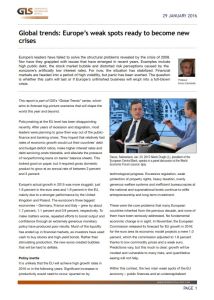Únase a getAbstract para acceder al resumen.

Únase a getAbstract para acceder al resumen.
Enrico Colombatto
Europe’s Weak Spots Ready to Become New Crises
GIS, 2016
¿De qué se trata?
The European Union may face financial contagion unless it addresses its pressing problems.
Recommendation
The European Union is facing considerable weaknesses in banking, public debt and growth that place the Continent at risk for further crises. Policy makers are looking to quantitative easing and zero-bound or even negative interest rate policies for a solution, but according to economics professor Enrico Colombatto, their remedies have been unable to spur growth. Executives and investors with an interest in one of the world’s largest economies will find immense value in this brief but compelling report, which getAbstract highly recommends.
Summary
About the Author
Enrico Colombatto is a professor of economics at the University of Turin, Italy.




















Comment on this summary